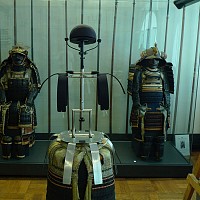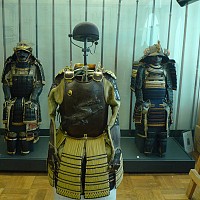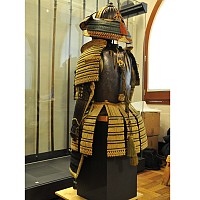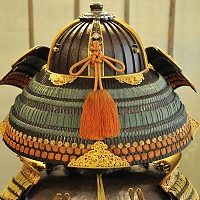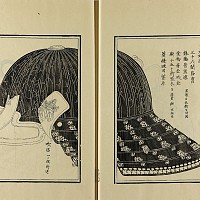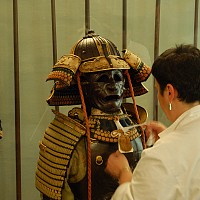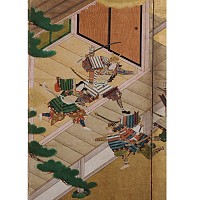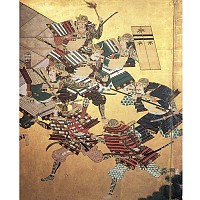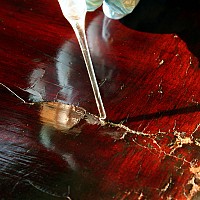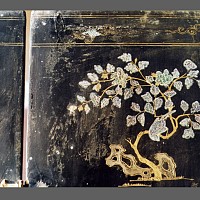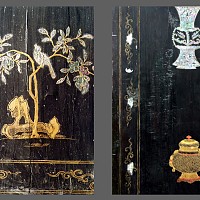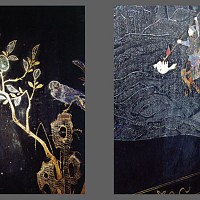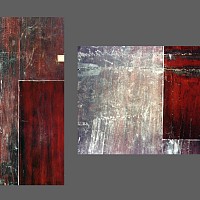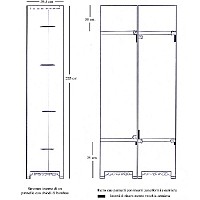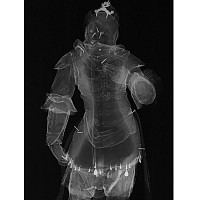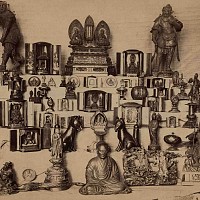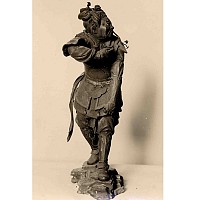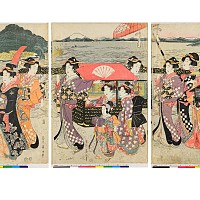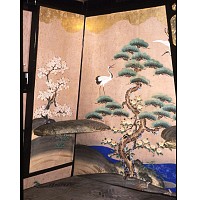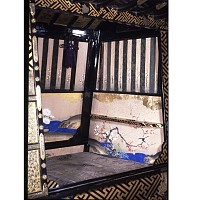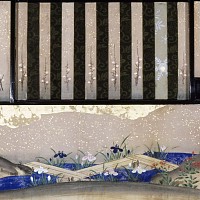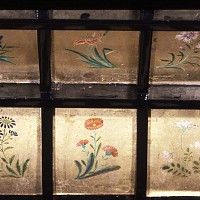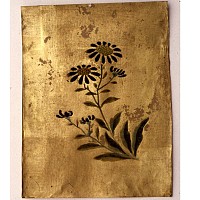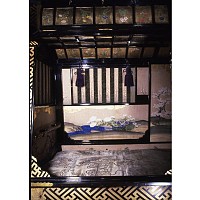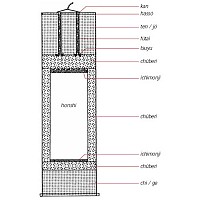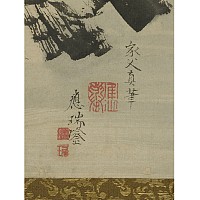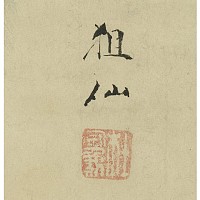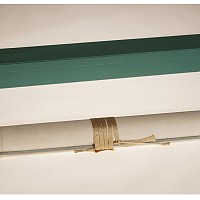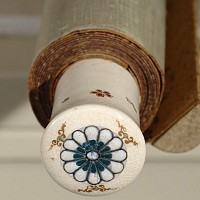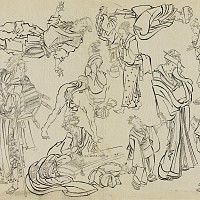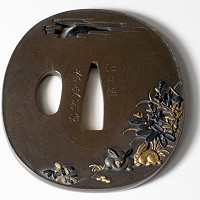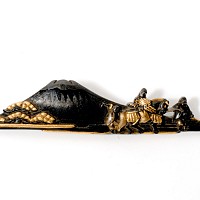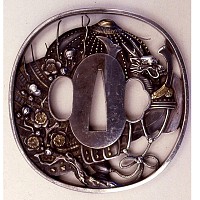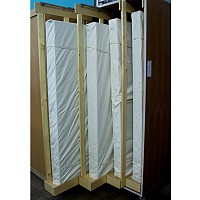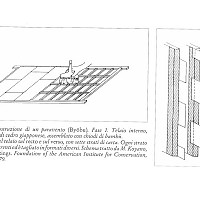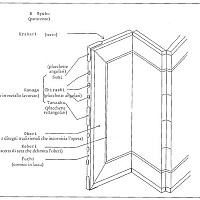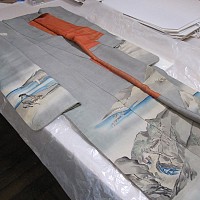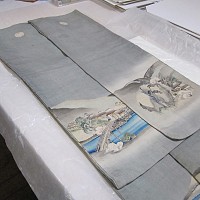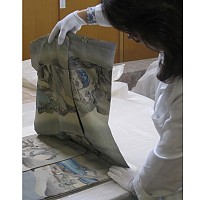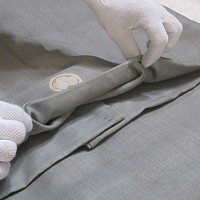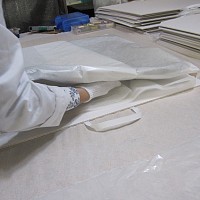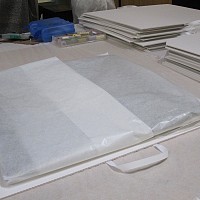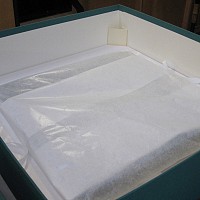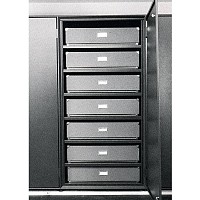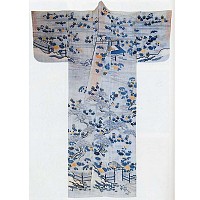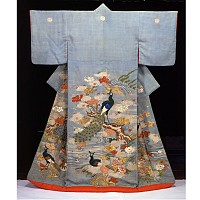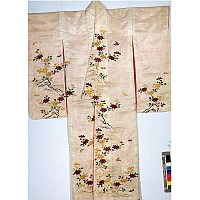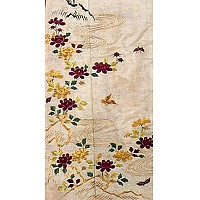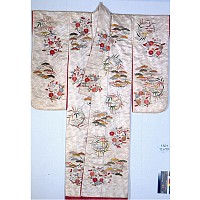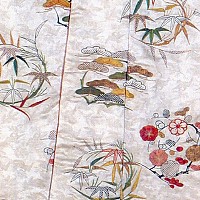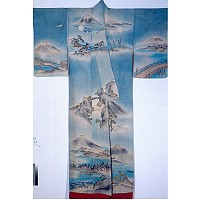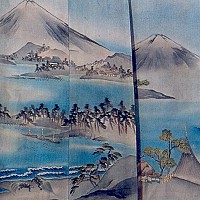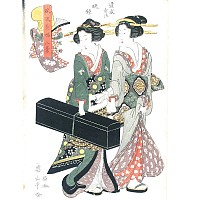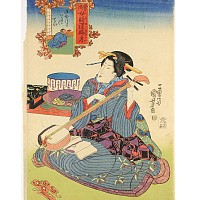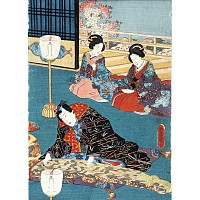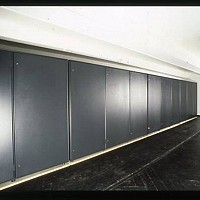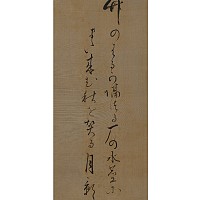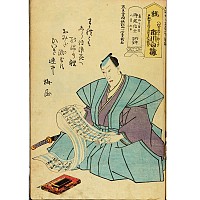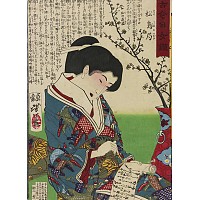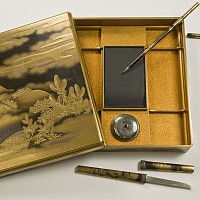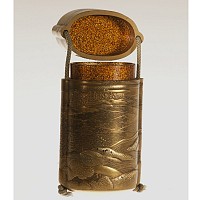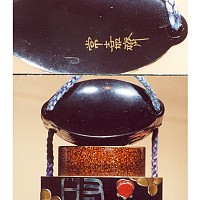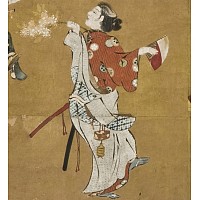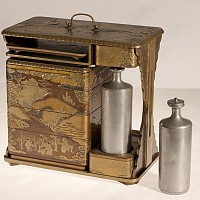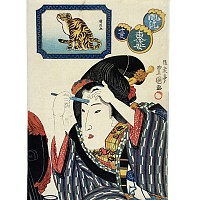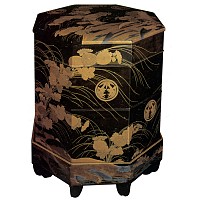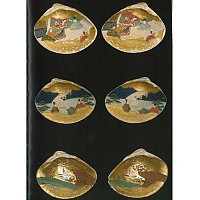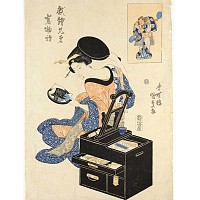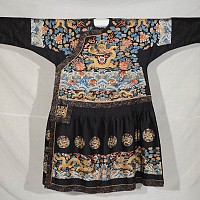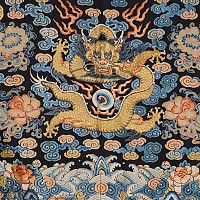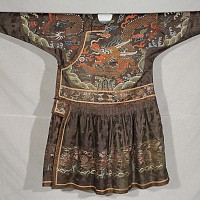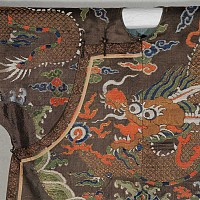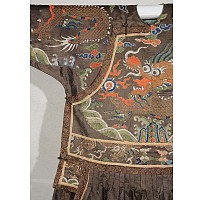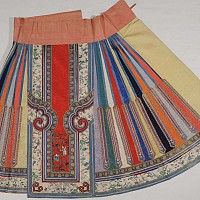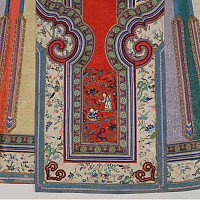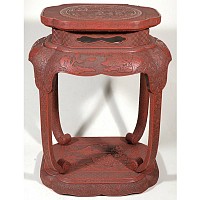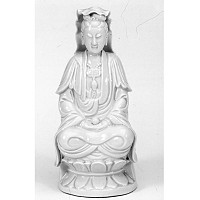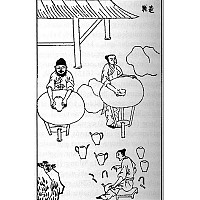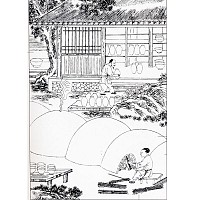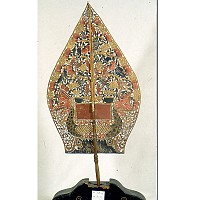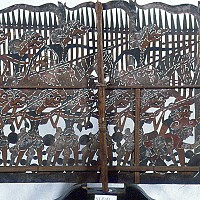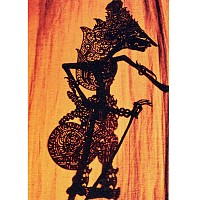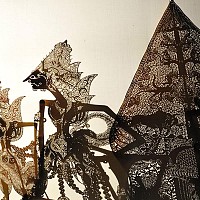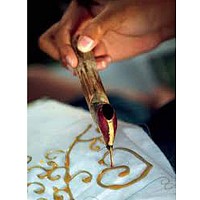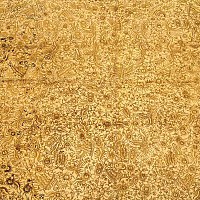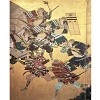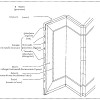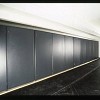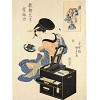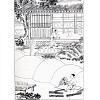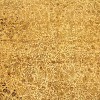Room IV
The detailed decoration of kodogu (military accessories) began in the 17th century with motifs based on natural world, both from literature and mythological tradition. The most employed metal alloys were shakudō (composed 94-99% of copper, 1-6% of gold, silver trace, antimony, and lead) and shibuichi (composed of copper and silver with zinc, lead and arsenic traces). The Japanese masters used manuals of models to realize these accessories. For example, in the Shinkokko gashū Museum (1857, “New collection of models for Japanese blacksmiths”), a collection of very detailed drawings with accurate instructions for kodogu realization, is preserved.
Japanese scroll paintings, kakejiku, were hung in the tokonoma (alcove) and they were changed according to special events or seasons. When rolled up, they were stored in paulownia wooden boxes. Also in the Museum many scrolls are kept in storage, rolled inside their boxes. The scrolls are realized in ink and natural pigments on paper or silk, assembled over a silk support that helps to preserve the work and makes it easily transportable. The central painting and the support where it is pasted must be considered as a single entity.
On the painting there is often the author’s signature and their personal seal, which is usually square and red with archaic style characters either carved or in relief. The Japanese painting expressions done also on folding screens and prints are stored in the deposit of the Museum due to lack of exhibition space. The lacquer lady’s sedan-chair, onna norimono, is from the second half of 18th Century. It has two sliding doors and lint windows. It is decorated with a meander pattern and the paulownia family crest (mon) in the shape of a butterfly. The golden metal plates have a stylized vegetal pattern with small studs in the shape of a plum blossom. Inside, the sedan-chair is covered with painted and golden paper, and flowers and plants referring to the four seasons.
The beautiful Chinese lacquer screen that is decorated with hunting scenes, and with twelve shutters, “Coromandel” style, also dates back to the 18th century. According to Buddhist cosmology, the '12 Divine Generals' command the Yakushi Buddha’s medical army and are divine creatures with fierce personalities, whose task it is to intervene and protect from illness. The Museum is home to two sculptures of these creatures. Based on their technique and structure these sculptures are related to the Japanese 'Nara Kei School' in the beginning of Kamakura period (1185-1333).
To realize these sculptures, two techniques are applied: the first being the yosegi zukuri, where small wooden pieces are singularly sculpted and after being assembled, covered with lacquered cotton gauzes, and accurate detailing using gold, silver and mineral pigments; the second technique is gyōkugan kannyū, which creates the resemblance of eyes by using a wooden section with a rounded white side, then pupils and irises painted on pieces of silk or paper and covered by a glass lens. The light, passing through the glass lens, creates a glare very similar to the human eye.


